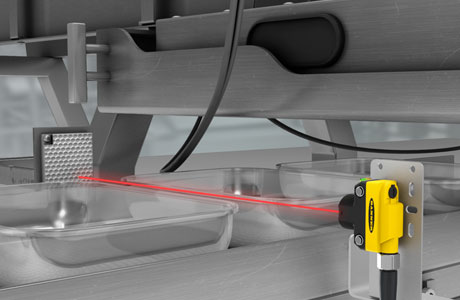Key Takeaway
Photoelectric detectors can face issues in certain environments. They are sensitive to dust and contaminants, which can cause false alarms or reduce their accuracy over time. In industrial settings, where dust is common, this can make them less reliable.
Another disadvantage is their susceptibility to interference from external light sources. Bright lights or sunlight can disrupt the sensor’s ability to function correctly. This makes them less effective in outdoor or well-lit areas, where maintaining accuracy can be a challenge.
Environmental Limitations of Photoelectric Detectors
One of the biggest challenges with photoelectric detectors is their sensitivity to environmental conditions. These detectors rely on light beams to function, making them vulnerable to changes in the environment. For instance, extreme temperatures can affect their internal components, causing inaccuracies in detection. Additionally, fog, mist, or rain can scatter the light beam, leading to false readings or failures in detection. In outdoor or uncontrolled environments, this could pose significant problems, especially in safety-critical operations where precision is key. Understanding the limitations of photoelectric detectors in specific environments can help determine if they’re the right fit for the task.

Sensitivity to Dust and Contaminants: How It Affects Performance
In industrial environments, dust and contaminants are a constant challenge. These tiny particles can settle on the lenses of photoelectric detectors, clouding the light beam. Once that clarity is lost, the sensor may struggle to detect objects accurately, or worse, it might trigger false positives. For example, imagine working in a food processing facility where grease and dust accumulate rapidly. Every day, you have to check the sensor to make sure it’s clean, or the entire system may start misfiring.
The key takeaway here is that while regular cleaning can help maintain performance, it’s not a simple task. Over time, the cost and effort of this maintenance can become significant, especially in environments like mining or manufacturing. It’s critical to factor in these extra demands when choosing a sensor. Neglecting this can lead to increased downtime, higher operational costs, and a decrease in efficiency, affecting your overall productivity.
Interference from External Light Sources: A Major Drawback
Photoelectric detectors rely on emitting and receiving light, which makes them vulnerable to interference from other light sources. Strong external lights, such as sunlight or intense industrial lighting, can disrupt their signals. If you’re in a warehouse with skylights or near large windows, the sunlight could be enough to throw off your sensor’s readings, leading to false detections or even sensor failure. This can result in operational hiccups that add complexity to what should be straightforward monitoring.
To counter this issue, some engineers use specialized filters or enclosures to shield the sensors from external light sources. However, these solutions often come with added costs and complexity. They might fix the problem in the short term, but they don’t fully eliminate the risks. For industries like automotive manufacturing, where precision is critical, even a minor disruption can lead to production delays or quality control issues. In such cases, balancing cost and performance becomes a significant concern.
Maintenance Challenges in Harsh Industrial Environments
Harsh industrial settings place a heavy burden on photoelectric detectors. Take environments with constant exposure to vibrations, chemicals, or heavy machinery, for instance. These factors can easily knock sensors out of alignment or cause physical damage, leading to malfunctions. For new engineers entering this field, it’s important to understand that regular calibration and maintenance are a part of the job. If not maintained correctly, the sensors may underperform, causing delays or even accidents.
The cost and time associated with maintenance can be substantial, especially in industries where downtime is expensive. When sensors constantly require realignment or cleaning, it interrupts workflow, potentially costing thousands in lost productivity. This is where alternatives like inductive or capacitive sensors shine. They can withstand harsher conditions with less frequent maintenance, making them a more cost-effective option in the long run.
When to Consider Alternatives to Photoelectric Detectors
Given these challenges, it’s crucial to know when photoelectric detectors might not be the best option. For instance, in dusty or high-light environments, they can become more of a liability than an asset. Inductive proximity sensors, on the other hand, thrive in dusty conditions because they don’t rely on light but instead on magnetic fields. Similarly, capacitive sensors are better suited for detecting non-metallic materials in dirty environments.
Understanding the specific conditions of your industrial setting is key. If your facility frequently deals with external light interference or airborne contaminants, exploring other sensor types may be the smarter choice. It’s all about matching the right technology to the right environment to ensure optimal performance and cost-efficiency.
Conclusion
Photoelectric detectors offer many advantages in industrial applications, but they come with certain drawbacks. Their performance can be compromised by environmental factors, dust, external light, and the need for regular maintenance. While they remain an excellent choice for many applications, it’s crucial to understand when their limitations might outweigh their benefits. By being aware of these disadvantages, engineers can make more informed decisions about whether to use photoelectric detectors or opt for alternative technologies that better suit their specific requirements.
